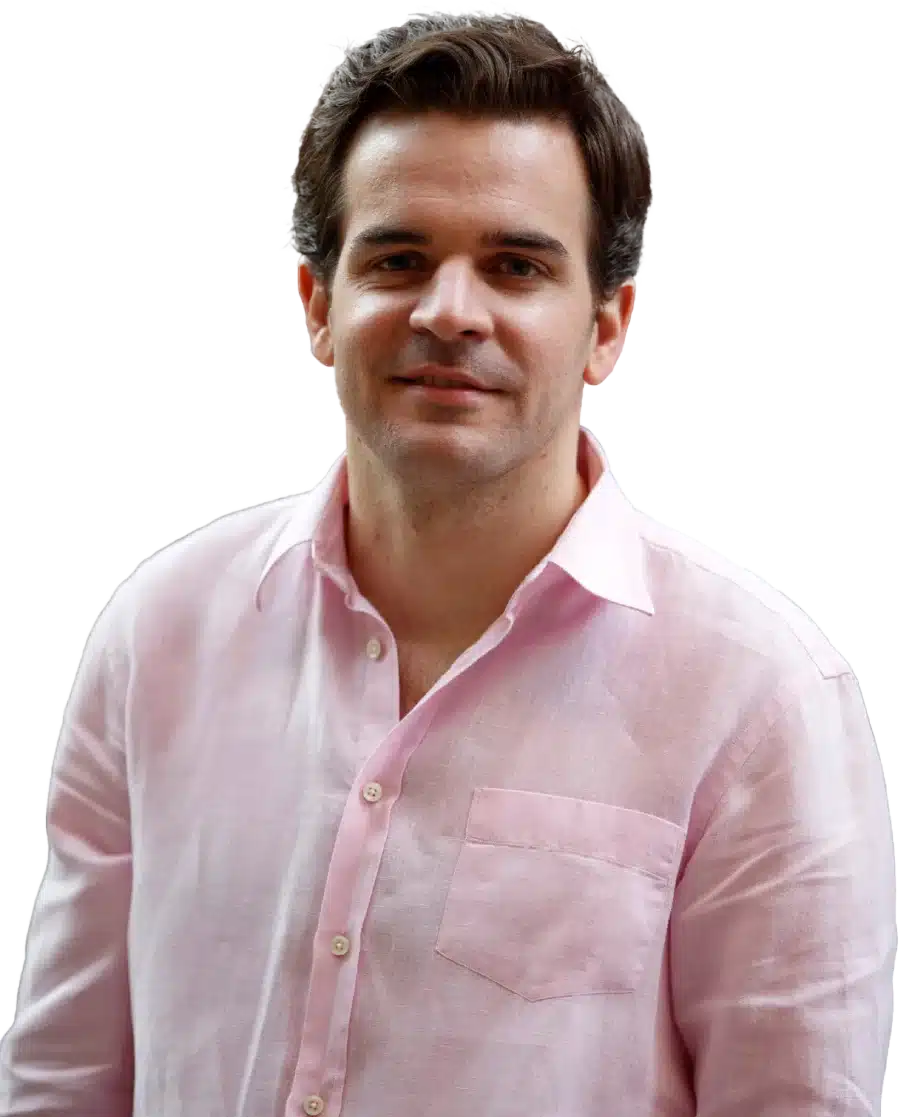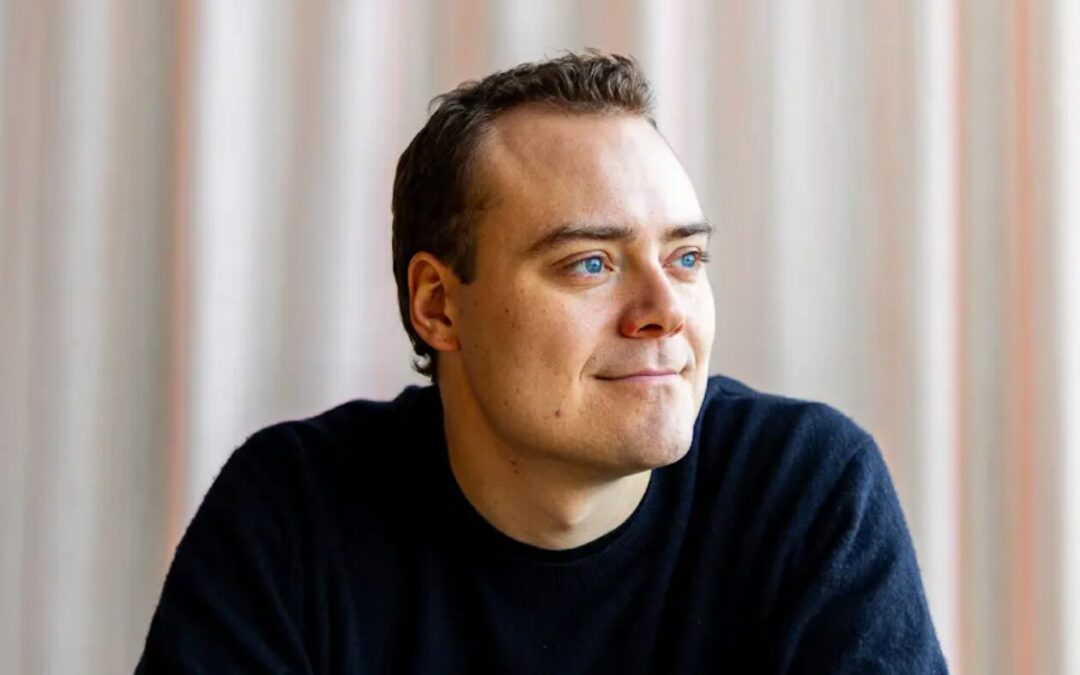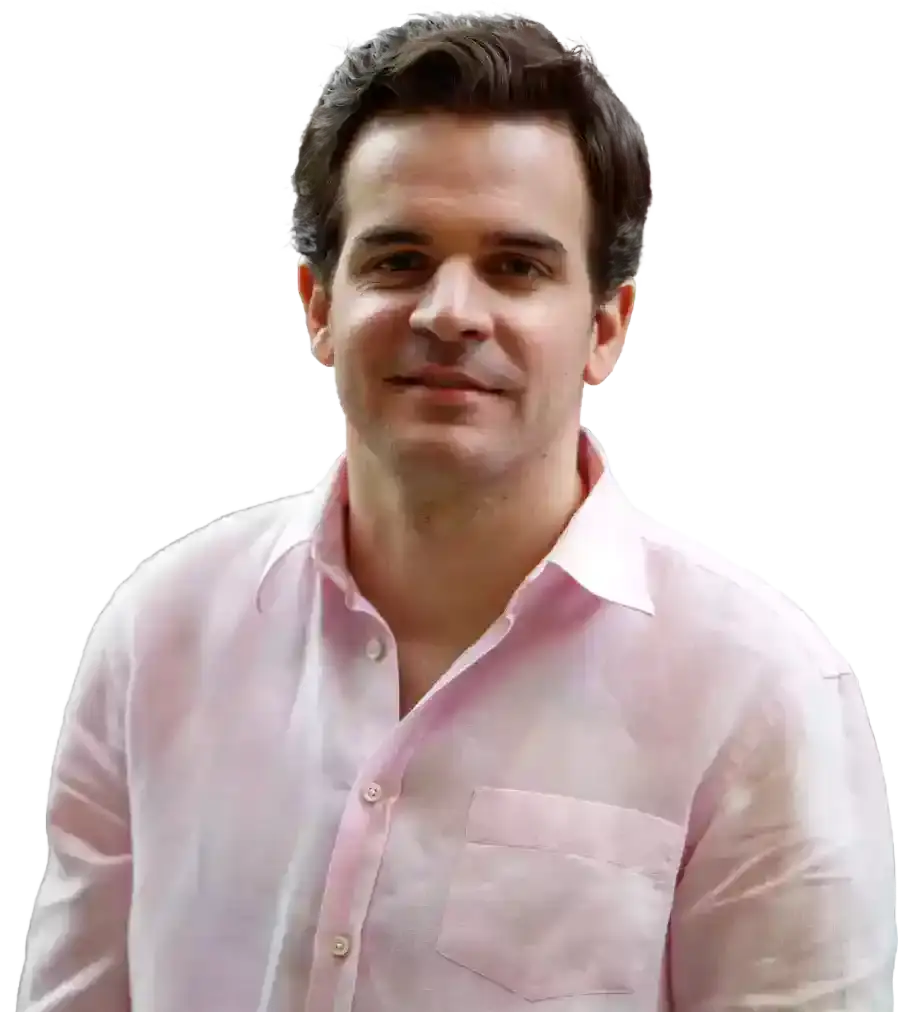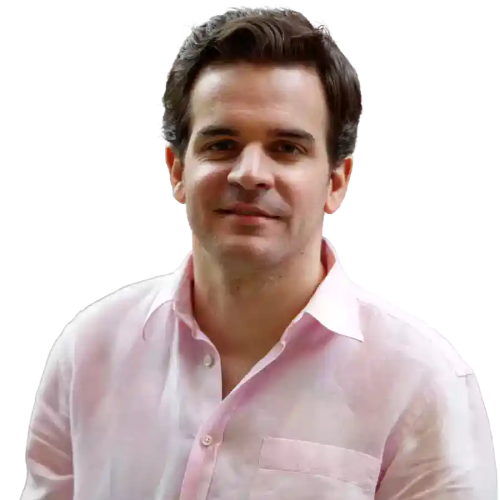When COVID-19 upended the global job market in 2020, John Diklev didn’t find a job—he built a company instead. His thesis-driven insights into the challenges of renewable energy evolved into FLOWER (Flexible Power), a cutting-edge energy tech company based in Sweden.
FLOWER has attracted funding from top-tier investors like Sony Innovation Fund, Northzone, Ellevio, and Sebastian Knutsson.
In this episode, you will learn:
- John Diklev founded FLOWER to solve renewable energy volatility by integrating flexible assets like batteries and EV chargers into the power grid.
- FLOWER combines technology, infrastructure, and energy trading to deliver stable baseload power from intermittent renewable sources.
- The company has raised over €117M ($133.5M) through a mix of equity and project debt, emphasizing capital efficiency and asset deployment.
- A pivotal moment came when FLOWER secured Sweden’s largest battery farm despite initial rejections and last-minute financing hurdles.
- John attributes fundraising success to radical transparency, a wide investor pipeline, and strong narrative momentum.
- Team scaling required a thoughtful organizational blueprint to manage rapid growth and avoid burnout during key phases of development.
- FLOWER’s regulatory breakthroughs were driven by transparency, data sharing, and a strategic challenge to conventional grid assumptions.
SUBSCRIBE ON:

*FREE DOWNLOAD*
The Ultimate Guide To Pitch Decks
Remember to unlock for free the pitch deck template that founders worldwide are using to raise millions below.
About John Diklev:
John Diklev is the Founder and CEO of Flower. With a background in energy systems and technology, John has helped to grow the company to 100+ employees in under four years. He is committed to driving the adoption of innovative solutions to optimise energy grids and support the global shift towards renewable energy.
John has diverse work experience spanning different roles and industries. In 2016, they started working as an Informationsanalytiker at a Private Group, where they stayed until 2020. In 2019, they founded Dorights, a service for negative emissions, and worked as a Grundare until 2020.
In 2020, John worked at Vattenfall as a Masteruppsatsprojekt. From 2015 to 2020, John Diklev attended the KTH Royal Institute of Technology, where they pursued a field of study in Industrial Engineering and Management with a focus on Sustainable Power Generation.

Raise Capital Smarter, Not Harder
- AI Investor Matching: Get instantly connected with the right investors
- Pitch & Financial Model Tools: Sharpen your story with battle-tested frameworks
- Proven Results: Founders are closing 3× faster using StartupFundraising.com
Connect with John Diklev:
Read the Full Transcription of the Interview:
Alejandro Cremades: Alrighty. Hello everyone, and welcome to The Dealmakers Show. Today we have a really exciting founder—a founder from Sweden. We’re going to be talking about the good stuff: building, scaling, financing, how to go about building the team, and trying to access capital at every stage of the journey.
Alejandro Cremades: So brace yourself for a really incredible conversation. Without further ado, let’s welcome our guest today, John Diklev. Welcome to the show.
John Diklev: Thank you, Alejandro. Great being here—thank you for having me.
Alejandro Cremades: So, originally from Stockholm, Sweden. I know you haven’t really moved much from your current location. Give us a walk down memory lane—how was life growing up for you?
John Diklev: I mean, Sweden is probably the best place in the world to grow up in, I would argue. Of course, I’m a little bit biased. But I was born and raised in Stockholm, and I’ve stayed here throughout my life, venturing out on different adventures as I grew up.
John Diklev: But I always had my base in Stockholm.
Alejandro Cremades: And talking about growing up, you were always a follower of your sister—same school, same everything, except for medicine.
John Diklev: Yeah, yeah. I think my parents had a plan for how we should progress through life until a certain age. When she chose medicine, I chose to go into engineering instead. So, it was both an interest and also about choosing my own path that didn’t align with hers.
Alejandro Cremades: So why engineering and physics?
John Diklev: I’ve always liked math and physics—and that sort of logical part of the world. I’m a very logically driven person. But I found that with physics, it was more math than I had braced myself for.
John Diklev: So I eventually changed my bachelor’s to Industrial Engineering and Management instead.
Alejandro Cremades: Buying and selling stocks was also something you started developing quite early. How old were you when you started?
John Diklev: Actually, I was with my wider family—my grandparents enrolled all of us in the yearly Swedish stock competition since I was one year old.
John Diklev: So that’s the first time I bought a stock. I bought a candy stock—I think my mom picked it for me. But I started picking up the actual hobby when I was about 16, and I’ve been doing it since.
Alejandro Cremades: And that led into forming a group of friends and creating your own investment thesis. That’s quite amazing.
John Diklev: Yeah, yeah. I did it just because I thought it was fun. It’s a good challenge. It’s a bit like an intelligence game—like playing chess, trying to be the smartest guy in the room.
John Diklev: That’s always been appealing to me.
Alejandro Cremades: So then, how do you all of a sudden decide that the best route is venturing into the unknown—into becoming an entrepreneur? Because obviously, Sweden is quite a traditional country. It reminds me a lot of Spain, where I’m from—it’s either you become a doctor, a lawyer, or go into consulting. But then, becoming a founder… So tell us about that.
John Diklev: Yeah, I mean, I think that’s partly true. But I’ve also heard recently that Sweden has the second-highest number of unicorns per capita outside of Silicon Valley.
Alejandro Cremades: That is true. That is true.
John Diklev: So we’re following in the footsteps of companies like Spotify and Skype. But I actually come from a family of entrepreneurs—my parents and grandparents have all had their own companies.
John Diklev: My mother actually made me promise—well, at least advised me—not to start my own thing immediately. But I didn’t stay true to that. COVID came, and it was hard to find a job. This was in 2020 when I founded the company.
John Diklev: Inflation was still low, and capital markets were alive and kicking. It turned out to be easier to raise money for a startup than to find a job at that point. So that’s the route I took.
Alejandro Cremades: So let’s talk about that. How did the whole idea of FLOWER come together?
John Diklev: I think it’s quite interesting. From an academic perspective, everyone has always known—since we started talking about adding intermittent renewable power supplies to our energy system—that we need to increase flexibility and storage capacity.
John Diklev: When I was doing my thesis, I realized that no one had actually solved that at a credible level. So I basically took what we had learned in school as a given—that we need to solve this problem of not knowing when the sun will shine or the wind will blow.
John Diklev: I said, “OK, someone needs to start building the solution to this.” That’s where FLOWER comes from—it stands for Flexible Power. We work with flexibility in all its forms to address this core challenge in the energy transition: how can we rely on renewable, intermittent power supply?
Alejandro Cremades: In that regard, tell us about the business model. How do you guys make money?
John Diklev: That’s a brilliant question. It’s complex. One investor told me, “John, you’re running a technology company, a hedge fund, and an infrastructure company.”
John Diklev: He also added, “How can I invest?” I think that’s true. What we do is connect to different “flexible assets”—that could be anything from EV chargers to large-scale batteries, where we can control the power exchange with the energy system.
John Diklev: That’s what we call flexibility—the capability to control that power exchange. From there, we can do a suite of things: ancillary services (basically insurance for the energy system), various forms of energy trading (buying/selling power, arbitrage, speculation), and power purchase agreements.
John Diklev: For example, we commit to buying power from a wind farm for seven-plus years. We add our base of flexibility to it and then sell baseload power—meaning fixed volume, fixed price contracts—to industries or other retailers.
John Diklev: Essentially, we manage the intermittency, refine volatile green electrons, and then sell baseload power so industries can rely on renewables plus flexibility for predictable operational costs.
Alejandro Cremades: What was that moment when you felt like you were turning a corner and were really onto something?
John Diklev: There have been so many corners to turn. Very early on, I told my wife, “Now we’re out of the bankruptcy trap.” Regardless of what happens, we won’t go bankrupt. Not sure if that was entirely true—but it was a moment where we felt safe.
John Diklev: One big milestone was when we invested in infrastructure and physical assets—specifically batteries. We bought the biggest battery farm in Sweden. As a startup, we were competing with infrastructure capital to buy it.
John Diklev: We weren’t the favorite in that race. We got kicked out of the process a few times—first because they didn’t believe we had the funding, then because our offer was too low. We had to secure more funding.
John Diklev: It was a rollercoaster—getting kicked out, being asked to come back in, then getting kicked out again. But we remained flexible on the soft terms of the deal.
John Diklev: We eventually got the battery. But our financing fell through just a few weeks before signing. We had to scramble and secure new financing—more than we had raised since the company started—in just a few weeks.
John Diklev: It was a real uphill battle. But we told ourselves, “We need to push the limit here. We need to do this.” When it all fell into place, it felt like we had turned a significant corner.
Alejandro Cremades: Talking about financing—how much capital have you raised to date, and what has the journey been like?
John Diklev: We’ve raised about €57 million in equity and a similar amount—around €60 million—in debt since the company started. The debt is almost entirely project financing, and the equity is at the top-co level.
John Diklev: Most of our cash has gone toward assets. We haven’t burned much relative to what we’ve raised. Out of the €55 million raised in equity, we’ve only burned €6–7 million on OPEX. The rest went into building assets and scaling.
Alejandro Cremades: How do you think about debt versus equity in a business like this?
John Diklev: For our projects, it comes naturally. Raising VC or growth capital comes with a much higher expected return than the cost of debt.
John Diklev: So for our projects, we prefer to add debt. But banks tap out earlier than we’d like, so we try to get as much as we can. Still, we’re probably not suitable today to own assets long-term.
John Diklev: We look to form joint ventures with partners who have a cheaper cost of capital to build an efficient capital structure. That’s key in the energy transition—it’s not just software that matters.
John Diklev: Real impact requires real assets. You have to tie that together and position yourself properly. Capital pools won’t adapt to fit you—you need to slice risk into different profiles to suit different capital sources. That’s something we’re working hard to be good at.
Alejandro Cremades: That’s amazing. Now, when it comes to fundraising, what are the top three key ingredients you’ve learned to be successful?
John Diklev: First, be transparent. Especially in our complex business, creating misalignment in ownership and perception would be a severe mistake.
John Diklev: We’ve been brutally transparent—listing all our challenges and problems, and showing how we’re addressing them and planning to grow.
John Diklev: Second, build a broad pipeline of prospects. Don’t put all your eggs in one basket. Raising capital takes time. It’s proper work—sitting through all the conversations. You start hating your own voice, but that’s part of it.
John Diklev: Third, it comes down to salesmanship. Build momentum in the round. You’re selling your product—your shares. If you combine transparency, legwork, and salesmanship, you can raise capital and be happy with the outcome.
Alejandro Cremades: Now, when it comes to people—investors, team members—what has the experience of building the team been like?
John Diklev: We’ve gone through different phases as a company. In the first two years, we grew to about eight people. That phase was about finding product-market fit and proving our MVPs…
John Diklev: And then the second two years were all about rapid scaling. We went quite quickly from about 10 people to almost 140 people in two years. What we did during that time was focus on having a very clear idea of what we were trying to build.
So the first step we took was to ask: “How do we want the organization to look in order to solve all the problems we foresee?”
John Diklev: We actually created an organizational chart, and then we placed our 10 people across that chart. We showed them: “You’re currently sitting in 10 different chairs simultaneously,” just to make it clear that we were pushing them hard and that we needed to find others to shoulder those responsibilities.
John Diklev: At the same time, it helped separate responsibilities more clearly. Later, it made it easier to say, “Hey, you’re currently covering three responsibilities. The intention is for you to focus on one.” That made the transition less emotional. As you scale, you find people’s bandwidth becomes maxed out, and then it’s my responsibility, as CEO, to step in and say, “You’ve got too much on your plate, so I’m taking these two things off of you.”
John Diklev: On an individual level, that can always feel like a loss. But being clear from the start that people had too much to do made the whole process much quicker and healthier, in my opinion.
John Diklev: Right now, we’re in the phase where we’re scaling and building the company we envision. But you’re always under pressure as a startup. The question becomes: “Have we filled all the holes in the company with the right people? Are the right people in the right places?”
John Diklev: So now I think we’re in this maturing phase—we have the body, but now we need to start working out in order to ultimately increase productivity. Last fall, we made a relatively drastic change and said, “More people won’t necessarily make us more productive.”
John Diklev: It’s more about how we build processes, how we create clear communication channels, and how we remain transparent about what’s going on. That’s how we make every individual more productive at the end of the day.
John Diklev: That’s the phase we’re in now. And I think, similar to raising capital, you need to move from phase to phase. Each one requires you to adapt with a new set of skills and a new perspective.
John Diklev: That, I think, is the key to scaling successfully—recognizing that, as a company, you might have done the perfect, rational, and successful thing over the past two years, but now you have to drastically change because you’re entering a new phase.
Alejandro Cremades: Now, when it comes to building a business, you not only have uncertainty in the business itself, but in a company like yours, you also face the regulatory side of things. How has it been to balance both?
John Diklev: Yeah, I mean, we have both regulatory and commodity risks—and a lot of risk moving at the same time. But especially on the regulatory side, we’re trying to push something new.
John Diklev: One of the first things we did was connect about 1,000 EV chargers and say to the system operator: “Hey, we’d like to be your insurance contract. If nuclear power plants drop offline, we want to be part of that insurance—reducing the system load corresponding to the lost production.”
John Diklev: Of course, they were very skeptical at first. They hadn’t seen EV chargers do this before. In their world, big gas turbines or large hydro plants are reliable.
John Diklev: The idea of using stochastic behavior from 1,000 EV chargers didn’t feel reliable to them. But we would argue the opposite—how people behave isn’t unpredictable. In fact, it’s quite predictable today. And having lots of small assets can increase reliability more than relying on one large turbine.
John Diklev: It took us more than half a year—from building our product to getting them to accept even reviewing it. That was a major part of our first two-year journey: getting regulatory approval to do what we intended.
John Diklev: It wasn’t a technical issue. We met all the technical requirements. The real issue was trust—whether we were trying to fool them somehow.
John Diklev: So we decided to become brutally transparent. We wrote a 12-page document called The Philosophical Room on EV Chargers, explaining how EV chargers work and how we approached all the issues they were concerned about.
John Diklev: We also sent them data from all our chargers over several days and said, “Here, take a look.” That brutal transparency helped remove the trust issues.
John Diklev: And that, I think, was the key to building trust with regulatory authorities.
Alejandro Cremades: Now, imagine you go to sleep tonight and wake up in a world where the vision of FLOWER is fully realized. What does that world look like?
John Diklev: In that world, we have a sovereign energy system in the European context—fully based on renewables. We’ve also built out a large amount of energy storage, like batteries, and made sure our distributed assets—whether heat pumps, EV chargers, or industrial processes—are active, integrated parts of the energy system.
John Diklev: Today, most of those are passive components. We just supply power, and they passively consume it. If we succeed in our vision, we’ll have a stable power system with really cheap, cost-competitive prices—and prices that are also good in terms of system reliability and sustainability.
John Diklev: That’s what we’re trying to build.
Alejandro Cremades: Now, imagine I put you in a time machine and bring you back to the moment when you were thinking about starting your own business. If you had the chance to give your younger self one piece of advice before launching, what would it be—and why?
John Diklev: That’s a great question. I would probably say: say no more, and be ruthless in your conviction. At the end of the day, that’s what you’re building.
John Diklev: In the first two years, we were grasping at every straw to build track record because we felt a strong need to prove we were making progress.
John Diklev: But that created a lot of distractions—and ultimately headaches—because we engaged in projects that we probably knew weren’t ideal or scalable, but we wanted the traction.
John Diklev: So I’d go back and say: “Focus on the parts you think will work, that will scale, and that will be part of your long-term business. Then just execute on that.”
Alejandro Cremades: I love it. John, for the people who are listening and would like to reach out and say hi, what’s the best way to do so?
John Diklev: I think the easiest way is to reach out on LinkedIn. Then I’ll refer them to my email, and we can set up a time to chat.
Alejandro Cremades: Amazing. Well, John, thank you so much for being on The Dealmakers Show today. It has been an absolute honor to have you with us.
John Diklev: Thank you, Alejandro. Thank you for the great questions and a good discussion.
*****
If you like the show, make sure that you hit that subscribe button. If you can leave a review as well, that would be fantastic. And if you got any value either from this episode or from the show itself, share it with a friend. Perhaps they will also appreciate it. Also, remember, if you need any help, whether it is with your fundraising efforts or with selling your business, you can reach me at al*******@**************rs.com
Podcast: Play in new window | Download
Subscribe: Apple Podcasts | Spotify | TuneIn | RSS | More





Facebook Comments